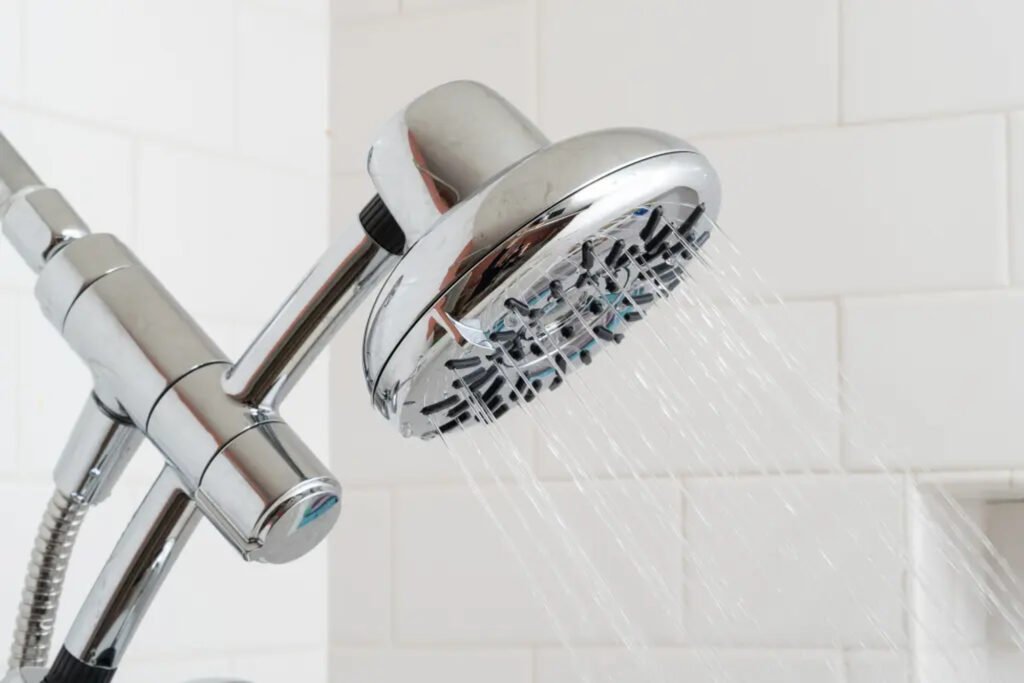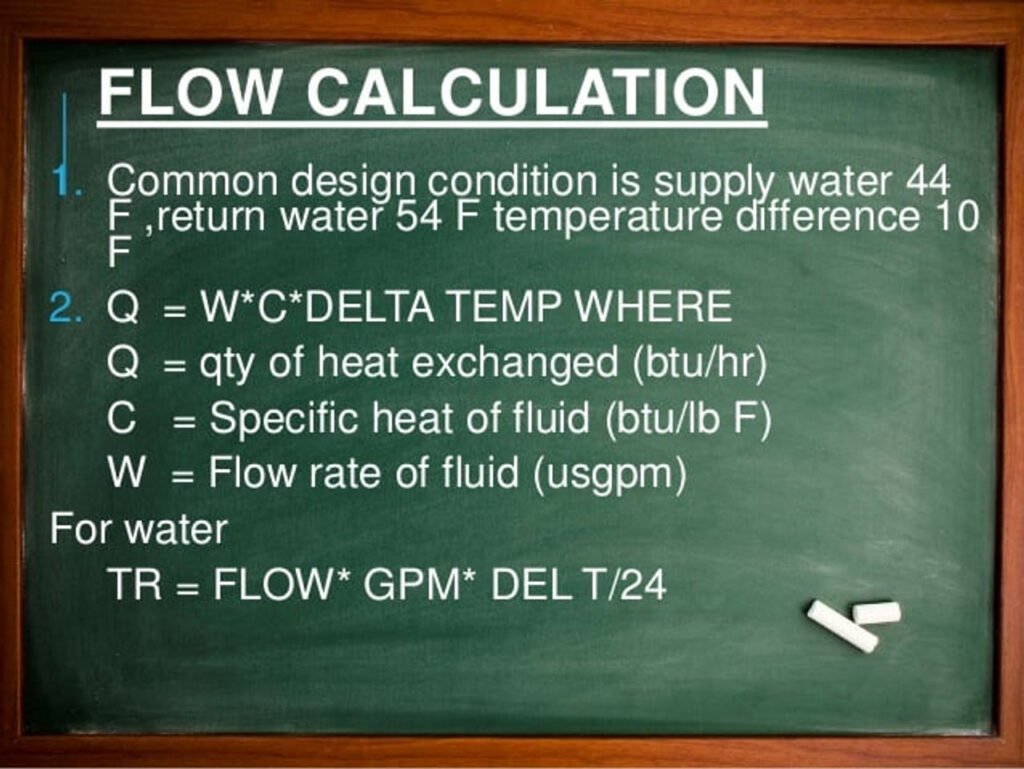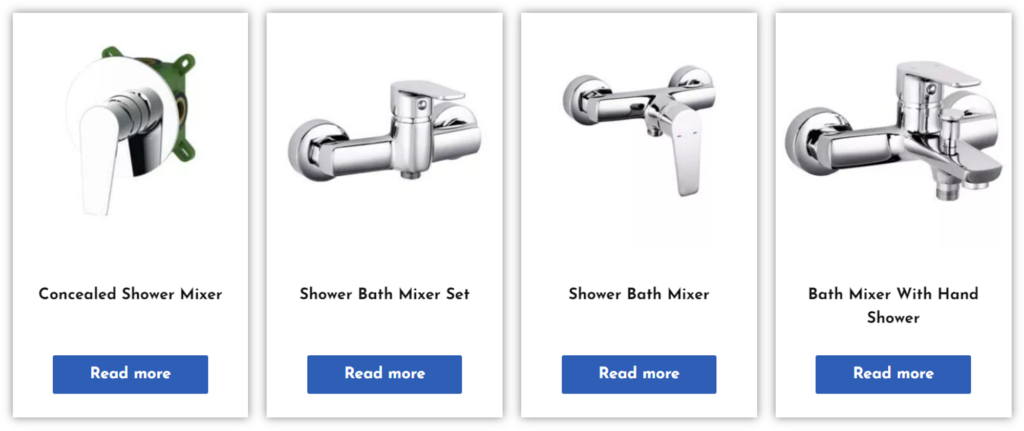What is GPM
The acronym “GPM” stands for gallons per minute. This measures how much water flow you can expect from a faucet or shower head. The higher the GPM rating, the more water flow you’ll get.
You can expect a GPM rating of around 2.5 GPM for a standard household faucet. Note that this may differ based on the model and brand of your faucet.
As for showers, the average GPM rating is 2.5 gallons per minute GPM as well. However, some high-end shower heads can have a GPM rating of 8 gallons per minute.
So, if you’re looking for a Faucet or shower with a high water flow, you should look for one with a high GPM rating.
Why measure the flow rate
Measuring the flow rate of taps and showerheads in your home has several reasons.
- First, it is essential to know the GPM to determine the right water heater size for your home. The wrong-size water heater will either need to provide more hot water or be too expensive to operate.
- Second, measuring the flow rate can help troubleshoot problems with your plumbing. For example, checking the flow rate can help you identify the problem with the water main or your fixtures if you find your water pressure is low.
- Third, knowing your fixtures’ flow rate can help you conserve water. Knowing how much water your fixtures use, you can adjust your habits to use less water overall.
Measuring the flow rate of taps and showerheads in your home is a simple task that can provide valuable information. Whether you are trying to choose the right size water heater or want to save some water, measuring the flow rate is well worth the effort.
Oregon State University Turfgrass
How do local governments regulate showerheads?
Some states and local governments require GPM flow rates even lower than federal regulations.
- For example, California requires a maximum flow rate of 2.0 GPM for new or replacement showerheads. In addition, Florida requires all new showerhead installations to be 2.0 GPM or less.
In addition, many communities offer incentives and rebates to residents who voluntarily install low-flow showerheads.
- For example, Texas‘ Water Optimization Program rewards people for reducing their water consumption from 2 GPM (gallons per minute) to 1.5 GPM. Under this particular program, people can receive a $100 incentive from their local water company if they agree to be evaluated before installing a new or replacing an old high-flow shower. Rebate amount
How to enjoy a great shower without breaking the law

Below are three ways that you can still enjoy a great shower without breaking the law:
Short showers
Did you know that one of the most straightforward ways to save water is by showering for a shorter time? If you’re used to showering for 20 minutes, try cutting it to 10 or even 5 minutes. You may be surprised at how little time you need to get clean!
Low-flow showerheads
As mentioned above, many showerheads today have low-flow rates of 1.5 GPM or less. While these may not provide the same level of water pressure as a standard showerhead, they can still offer a great showering experience if you take shorter showers.
Water-saving tips
There are several simple ways to save water while showering, such as turning off the water while lathering up or investing in a shower timer. Following these simple tips can save water without sacrificing your shower enjoyment.
How To Measure GPM
R.C. Worst & Co., Inc.
The flow rate in a pipeline is always measured in gallons per minute GPM. You might see the flow rate as a number on some showerheads or faucets. Federal law requires all bathroom faucets sold in the U.S. after 1994 to have maximum flow rates of 2.2 GPM at 60 pounds per square inch (PSI) of pressure.
The maximum flow rate for showerheads is 2 GPM according to this law. The water pressure in your home might be higher or lower than 60 PSI, which means each fixture might use less or more water than its rated output. That’s why you should always test the flow rate of each new fixture before using it.
Luckily, this simple task can be completed with just a few easy steps.
A small jug is an ideal container to fill with water from the tap, as it can be easily tipped out to measure. Buckets are best for shower heads, as they can more readily gather all the water from the shower head‘s spray. For timing, most people use the timer function on their smartphone, or you could use a watch or clock.
Tools
Equipment/tools
Bucket or another container for water timer or stopwatch measuring cup
Materials
A sheet of paper (optional)
Water collection

Collect a certain amount of water from a sink or faucet. For example, when you need to know if the tap water pressure is sufficient, collect 10 gallons of water. However, to determine the volume of water from a pump, you may need to collect 50 to 100 gallons of water.
Measuring water
Pour a large 5-gallon jug into the water. Some people use old food cans. To make the calculation more accessible, you can use something else, though. But ensure the container is adequately marked to take measurements during the process. Catch all the water until the inside of the jug is filled with the 5-gallon mark. Only use five gallons for this test.
Measure the time
Measure the time. Now start the time tool you are using. Five gallons take up about 19 quarts (22.7 liters) of space, so if you can only get 1 in 19 units of time (e.g., minutes or hours) – then that’s a flow rate of 5 gallons per unit of time – then see the next step. Otherwise, use the faucet. Timer or cellphone stopwatch app for accurate measurements. These apps usually have 1/1000th of a second resolution (or better) and can accurately measure shower heads flow rates.
Calculation

Calculate GPM flow rate = 5 gallons per time unit — i.e., 5 gal/min (GPM), 5 gal/hr, etc.
Understanding GPM Rate Units:
1 Gallon per Minute => 60 Gallons per Hour => 1440 Gallons per Day 1 Liter per Minute => 60 Liters per Hour => 1440 Liters Per Day
Tips:
- If you need to convert other rate units, please use an online converter tool. This will give you the equivalent flow rate in gallons per minute (GPM), liters per second (L.P.s), or amount of water flowing out of the tap in a given。
- If using an online calculator, check the input fields to ensure you use the correct units for your needs!
How to Change a Fixture’s Flow Rate
If you want to change the flow rate of a showerhead or bathroom faucet, there are two main ways to do it:
Bathroom Faucet
Generally, bathroom sink faucets should have a flow rate of 1.5 GPM or less. This helps to conserve water and save money on your utility bills. In addition, low-flow taps can help protect the environment by reducing daily water wasted. When choosing a new bathroom sink faucet, look for one with a low flow rate. This will help you save water and money while efficiently completing the job.
Kitchen faucets
We often ask how to change a kitchen faucet’s flow rate at the hardware store. The standard flow rate for a kitchen sink faucet is 2.2 gallons per minute (GPM), yet you may want to lower or elevate the flow depending on your needs.
You can easily regulate the flow rate of your kitchen sink to save water or time, and we’ll demonstrate how it’s done. For instance, lower the flow rate if you want to conserve water. On the other hand, if you have a lot of dishes to wash quickly, increase the flow rate.
First, you‘ll need to identify the adjusting screw on your faucet. This is usually a small screw near the faucet handle’s base. Once you’ve found it, use a Phillips head screwdriver to turn it clockwise or counterclockwise until you achieve the desired flow rate.
So whether you’re trying to be more eco-friendly or speed up your dishwashing routine, changing the flow rate is a great way to achieve your goal.
Showers
Most showerheads have a flow rate of 2.5 GPM, but you may want to increase or decrease the flow rate depending on your water pressure or how much water you want. Fortunately, it’s easy to adjust the flow rate on most showerheads.
Simply remove the showerhead from the pipe and look for a small disc or plug near the tip of the showerhead. This disc can be rotated to adjust the flow rate. If there is no disc, there may be a small set screw that can be turned clockwise to increase the flow rate or counterclockwise to decrease it.
Once you’ve adjusted, reattach the showerhead and test the new flow rate. You can easily change your shower’s flow rate with a few simple adjustments to suit your needs.
Where can I find affordable, high-performance, low-flow faucets?

Hofen sanitary ware supplier is a great place to begin your search for an affordable, high-performance, low-flow faucet. With 20 years of experience in the industry, Hofen is dedicated to providing customers with quality products built to last.
In addition to its wide selection of low-flow faucets, Hofen also offers a variety of other bathroom and kitchen fixtures. So whether you’re looking for a new showerhead or just a simple kitchen sink faucet, Hofen has what you need.
Wrapping up
There you have it! These are just a few ways you can change the flow rate of your fixtures. Whether you want to save water or speed up your routine, adjusting the flow rate is a great way to achieve your goal.
So don’t hesitate to give it a try. And if you need any help, our team at the Hofen would be more than happy to assist you. Thanks for reading!

